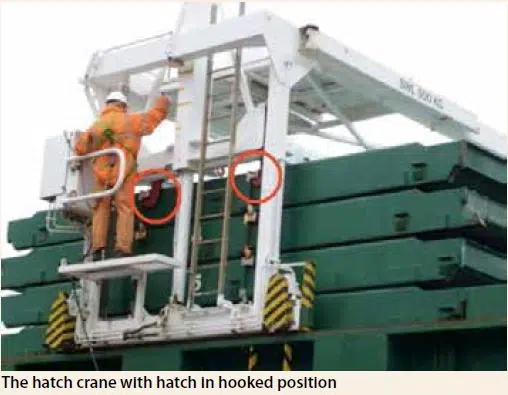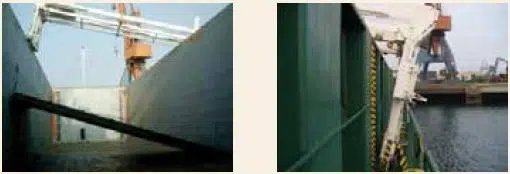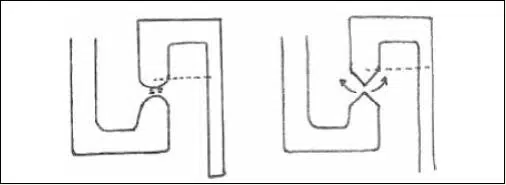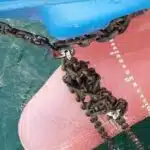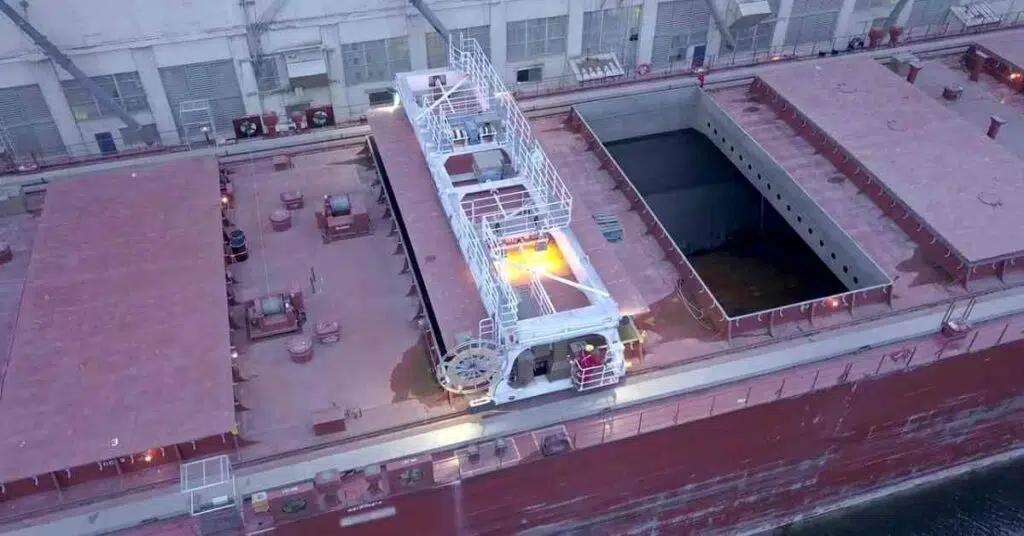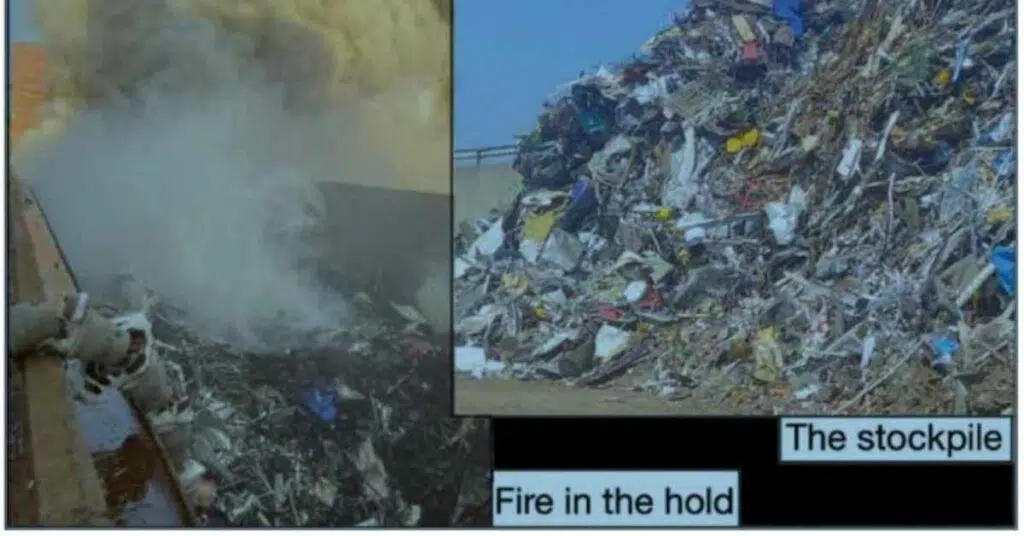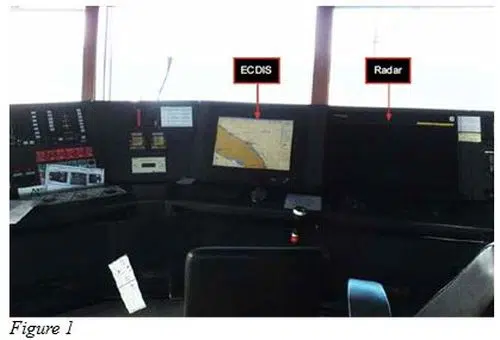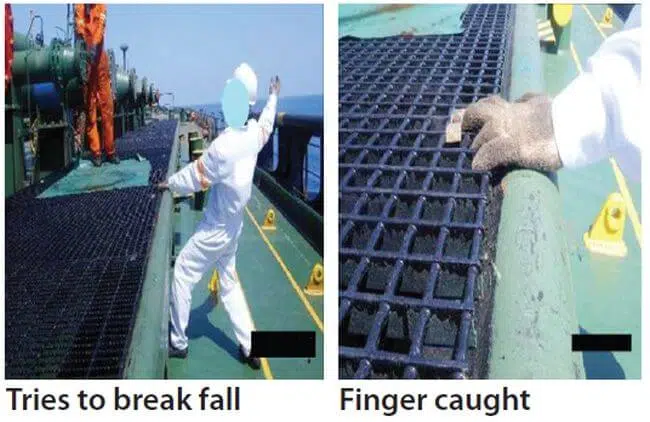Real Life Accident: First Mate Falls Into Cargo Hold While Operating Hatch Crane
While closing the hold a hatch fell out of the hatch crane and into the hold. This then caused the hatch crane to come off its rails on the starboard side. The first mate, who was operating the hatch crane alone from the operating platform, fell approximately eight metres into the hold; he was not wearing personal anti-fall protection (safety harness). He suffered serious injuries as a result of this fall and was admitted to hospital in a critical state.
The hatch crane and hatch arrangement are similar to those in many small ocean going and inland vessels. The hatch crane rides on both sides of the hold over rails which are fitted to the hatchway coaming. The crane consists of two vertical uprights and a yoke, placed athwartships [across the width of the vessel] and fitted with hooks from which the hatches are hung during hatch movement. The hatches are fitted with attachment points, referred to as ‘pockets’. There are markings on both the hatches and the hatch crane to indicate the correct position of a hooked-up hatch relative to the hooks of the hatch crane. The person who operates the crane stands on the hatch crane, either on one side or on top, and rides along with the hatch crane while the hatch is moved.
Because the hatch was being transported in a high position, not only was its centre of gravity higher than need be, but also there was little chance of it coming to rest on the hatchway coaming when it fell. The investigation also determined that the hooks of the hatch crane yoke on the starboard side did not connect to the hatch attachment points but to the rounded (outer) side of the attachment points. Contrary to the vessel’s procedures, this was not checked by a second person at the time of the manoeuvre.
Since 1992, a total of 15 incidents involving hatch cranes on board Dutch flagged ships have been reported to the authorities. These have resulted in three deaths and 13 serious injuries. Investigations have revealed two categories of incidents/accidents. On the one hand, many occurrences involved contacts between the crane and people on or near the rails. On the other hand, eight other occurrences involved hatches falling out of the crane hooks, potentially causing the hatch crane to topple or shift, and then the operator to fall. Dutch authorities made a number of recommendations to limit this type of accident. They can serve as a list of lessons learned.
Recommendations
1 Use claws on the hatch crane which grip the rails so that the crane cannot topple or shift off the rails.
2 Use sharp ended hooks and pockets, so that the hook cannot lift the hatch if it is not properly connected.
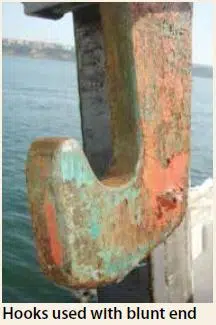
4 Apply markings to the hatch crane and the hatches so that it is clear whether the crane is correctly positioned in relation to the hatch.
5 Move the hatch crane only when the pontoon is in the lowest possible position to keep the crane’s centre of gravity as low as possible.
6 Use ‘brushes’ in front of the wheels, so that fingers can be pushed away instead of becoming trapped.
7 The installation and maintenance of audiovisual warning signals in order to warn bystanders of the driving crane.
Reference : Nautinst (Mars Reports)
Do you have info to share with us ? Suggest a correction
- Real Life Incident: Vessel Collision in Good Visibility
- Real Life Incident: Severe Injury To Deck Crew While Leaving Berth
- Real Life Incident: Departure Damage in Very Restricted Waterway
- Real Life Incident: Low Situational Awareness Has High Impact Consequence
- Real Life Incident: Fouled Anchor in a Designated Anchorage
- Real Life Incident: Fire On Barge Carrying Scrap Metal Causes $7 Million Worth Of Damage
Latest Case studies Articles You Would Like:
Subscribe To Our Newsletters
By subscribing, you agree to our Privacy Policy and may receive occasional deal communications; you can unsubscribe anytime.



